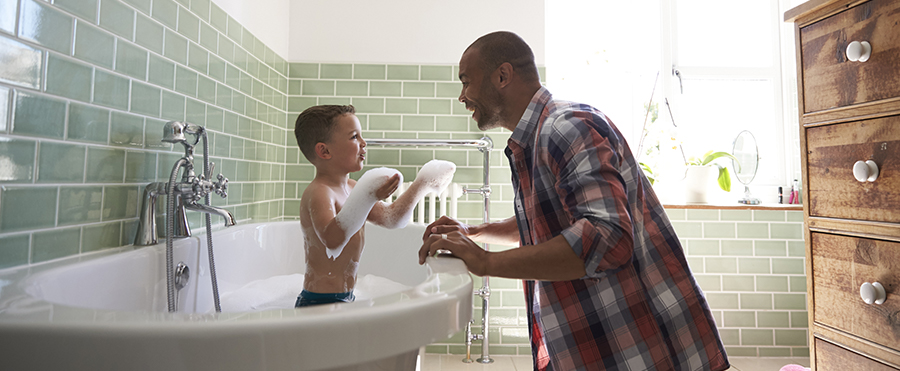Bath time can be a great opportunity for kids to first become familiar with water. In a controlled, supervised environment, it offers a chance to nurture key developmental skills around water.
Sadly, in Australia five children under five years of age will drown in the bathtub each year on average, and a further 31 will be hospitalised due to bathtub drowning related incidents.
To combat this, Royal Life Saving Society Australia’s (RLSSA) Keep Watch program offers tips for parents on how they can ensure the safety of their children around the bath.
Supervision
Above all, active adult supervision is key to keeping children safe around water.
According to RLSSA, active supervision has four key elements; be prepared, be close, all of your attention, all of the time.
In practice, this means making sure you have everything you need in the bathroom before you begin bath time with your child. Make a checklist to ensure you don’t forget anything. Bathtub toys? A towel for drying off afterwards? A change of clothes?
When filling the bath, make sure the water is at a comfortable temperature. To aid this, the cold water tap should be turned on first, and turned off last. The water level should also remain at the minimum depth necessary. RLSSA recommends this should be only enough to wet the child using your hands.
When your child is in the bath, make sure you are within arm’s reach of them at all times and keep your eyes on them at all times also.
Maintaining engagement with your child during bath time is also important, not only for their safety but for developing skills. This includes talking to them and playing with them. To help with this, you can refer to our range of activities you and your child can do at bath time to develop their skills around the water.
Once bath time has finished, and your child has dried off, don’t forget to drain the bath and close the bathroom door any time it is not in use.
Resuscitation
In the event of an emergency, be prepared to respond. If you have not already, enrol in a CPR or First Aid course so you know what to do. Ideally, CPR skills should be updated or retrained every year.
In any case, RLSSA advises that any response is better than no response. Call 000 as soon as possible, and ‘push and blow’.
In summary, here’s what you can do to prevent your child drowning at bath time:
- Have everything ready for bathing
- Cold water tap run first and turned off last
- Test water to ensure it is comfortably warm
- Keep water to a minimum depth
- Ensure child is actively supervised by an adult and within arm’s reach.
- Never leave your child unattended. Child is with you if you leave the bathroom.
- Once finshed, turn taps off, remove plug, drain bathtub and close door closed.
- Update CPR skills annually.
For more information, visit:




